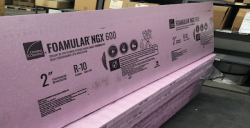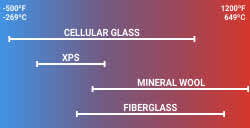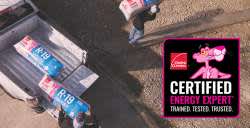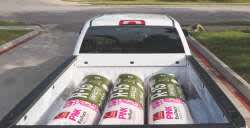
The Importance of Wall Insulation
Unless you work in one of the building trades, you may only have a vague concept of home construction — first the foundation, then the walls and roof. Along the way, electricity, plumbing and drywall are added. But hidden behind the drywall is a critical element that helps keep your home comfortable year-round — wall insulation. While insulation has many jobs to do in a house (from the attic to the basement), exterior and interior wall insulation provides homeowners with two main advantages.
Benefits of Wall Insulation
- Insulation reduces the transfer of heat. This effect works both ways. In the winter, insulation helps keep the heated inside environment from escaping, and in the summer, it helps your home stay cool by limiting outside heat transference.
- Insulation helps with acoustic control. Interior wall insulation can ensure you’re not broadcasting your conference call to everyone in the house.
Which Walls Should You Insulate in a Home? Exterior wall insulation is critical to keeping your home energy efficient and comfortable. Insulating interior walls provides an additional benefit of helping with noise control.
Wall Insulation 101
Most wall insulation is installed during the initial home build; contractors follow local building codes for R-values and installation techniques. Homeowners often don’t get involved with insulation until they begin a remodel, addition or home repair. When that happens, they suddenly need to learn a lot about insulation in a short amount of time. Let’s look at some of the basic concepts.
R-Value
Insulation products are assigned an R-value based on their ability to withstand heat transference. The higher the R-value, the more the product can resist heat flow. This doesn’t mean you should always use the highest R-value. The recommended R-value for floor and attic insulation is based on your locale. However, wall installation R-values are consistent across temperature zones, only varying to match the size of your interior studs.
| Stud Size | Zones | R-Value |
|---|---|---|
| 2x4 | 1-7 | 13 to 15 |
| 2x6 | 1-7 | 19-21 |
These R-value amounts represent a cumulative total, so you should add up all the insulation found in your walls to arrive at the final number. If, for example, you have a combination of XPS foam board and fiberglass batts. You’ll find the R-value listed on the packaging along with the stud sizing, making it easy to choose the best insulation for your job. The stated R-value is only applicable when the product is installed correctly.
HELPING OUR CUSTOMERS SAVE MONEYINFLATION REDUCTION ACT
Learn more about the insulation tax credits included in the Inflation Reduction Act.
What Type of Insulation is for Walls?
Fiberglass batts or rolls are the most common insulation products used by DIY homeowners for several reasons.
- Fiberglass is lightweight and readily available at home improvement stores in various quantities and R-values.
- Fiberglass batts simplify installation thanks to their precut lengths. Owens Corning PINK fiberglas is designed to friction fit within the stud cavity, reducing the risk of slumping.
- Fiberglass is easy to trim or split using only a utility knife.
Other wall insulation solutions include FOAMULAR® (XPS boards), mineral wool, loose fill and spray foam.
Finding the Best Wall Insulation
Your choice of wall insulation will depend on the location and circumstances of your project.
| Project | Access Point | Insulation Type |
|---|---|---|
| Insulating a new addition or garage | Open studs | XPS foam board, fiberglass or mineral wool batts or rolls |
| Finishing basement walls | Interior of basement wall, next to cement block or brick | XPS foam board against the wall, then mineral wool batts between framing studs |
| Adding exterior wall insulation to a previously uninsulated home (i.e., during a residing) | Outside of home or through an opening in the wall | XPS foam board or loose fill blown-in insulation |
| New home construction | Exterior of walls and interior open studs | XPS foam board, fiberglass or mineral wool batts or rolls |
| Sound reduction | Interior walls | Sound attenuation fiberglass or mineral wool batts |
Installing Insulation in Walls
Adding fiberglass insulation between open studs is a relatively straightforward process. Owens Corning makes it easy for DIYers with detailed instructions on their packaging. A few things to keep in mind.
- Follow local building codes for the exact placement of kraft-faced insulation, which is lined with a vapor retardant. In most areas of the United States, the facing should be towards the interior of the home. If you use faced fiberglass insulation, you can’t leave it exposed; it must be behind a wall or dropped ceiling.
- Always cut your insulation to fit your space. Don’t leave gaps, and don’t bunch up extra at the top or bottom.
- You can cut/split the insulation to go around electric boxes.
- Owens Corning fiberglass batts friction fit within the studs, but you can staple the flanges of the facing to the sides of the studs for extra security.
- Fiberglass needs its total thickness to perform correctly at its stated R-value. Allow a new package time to expand after opening and fluff slightly. Be careful not to compress the insulation into the stud cavity during installation.
- Wear gloves, long sleeves, eye goggles and a dust mask to avoid irritation.
Pro Tip: Don’t overstuff the stud cavity. You need the air pockets between the filaments to reach the product’s stated R-value.
FAQs About Fiberglass Insulation
Is fiberglass insulation made from real glass? Owens Corning PINK fiberglas contains recycled glass along with sand and other ingredients. The resultant mixture is melted over extremely high heat and poured into a spinning device pockmarked with tiny holes. As the molten mixture is forced through the holes, tiny fibers are formed. A binding agent is added to help the fibers adhere to one another along with dye. After another baking, the layered filaments are cut into strips and packaged.
Does fiberglass contain formaldehyde? In the past, formaldehyde was used as a binder to help hold the glass fibers together. Although the trace amounts left in the fiberglass were minimal, they banned its use in fiberglass. Owens Corning’s PINK fiberglas is validated to be formaldehyde-free. The product is also GREENGUARD GOLD certified and contains 55% recycled content at a minimum.
Can you get cuts from handling fiberglass? Although the base ingredients of fiberglass contain glass, no actual glass pieces remain within the spun threads. However, the dust from the fibers can cause temporary skin or respiratory irritation in large concentrations. For this reason, always wear protective gear when installing fiberglass insulation.



